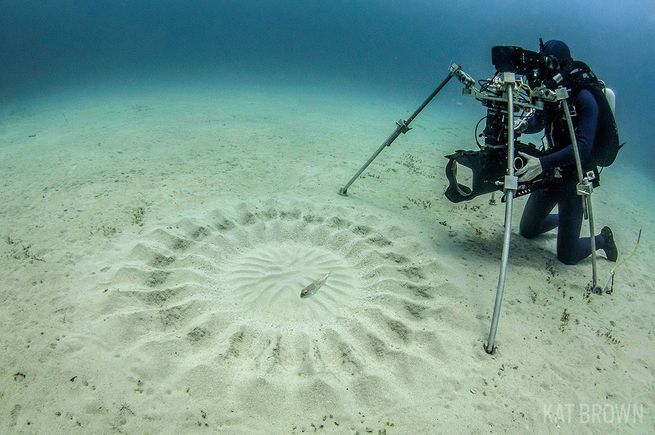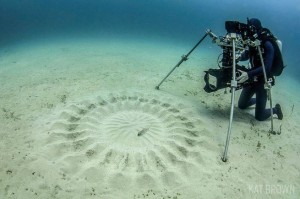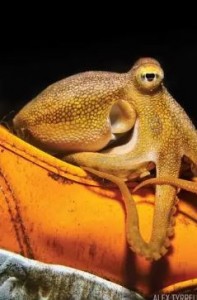Crop Circles
Divers were perplexed when they first found intricate designs in the sand off Japan’s Amami-Oshima Island some 25 years ago. But these 6-foot-wide structures are just another example of males in their endless pursuit of female attention. It’s more like John Cusack holding a boombox in Say Anything than Mel Gibson’s flattened cornfields in Signs.
This intricate display is the work of a tiny pufferfish — measuring less than 6 inches in length — which toils for around 10 days to make this nest, hoping to impress a female and have her lay eggs there.
The pufferfish — which was thought to be a new species in the 2013 research paper revealing this behavior — first finds a circle of smooth sand. Then, he’ll use his body to craft peaks in the sand, swimming back and forth from the inner core in a circular motion.
He puts some finishing touches on the design of the peaks, and then, the cherry on top: shells and coral fragments placed on top for true decoration. And if the male is successful, scientists say he never rests on his laurels and reuses the same nest. Because the collection of fine sand particles is a criterion for females choosing a nest, the male pufferfish will go to the trouble of constructing a new one to assure it’s chock-full of those valued particles. And if all of this seems like a lot of work for the guy, get this: After her eggs are laid, the female splits, leaving the dad to stay with the eggs until they hatch about a week later.
Bioluminescence Events
Start your dive under an ink-dark sky. To witness one of the ocean’s oddest bioluminescent shows — called String of Pearls — pick a night nearest a new moon. In the Caribbean, islands such as Roatan and Grand Turk are ideal.
In 30 to 45 feet of depth, kneel. Every member in your dive party must switch off their light. Now you wait. Then, tiny glowing orbs appear. One first, then another below it, creating tiny illuminated chains. Together, the lights resemble an underwater city skyline. This intricate twinkling show is the handiwork of deepwater crustaceans rising to mate.
Waterproof Headlights
There’s no need for the pineconefish to blindly rummage around for food in the dark, thanks to a special adaptation. Fish in the family Monocentridae — which are typically found in the Indo-Pacific — have two organs located on the lower side of their jaw that are colonized by luminescent bacteria.
The result? Mother Nature’s very own version of headlights. This adaptation helps the little fish — which can reach 8 inches in length — attract zooplankton and shrimp at night. The headlights appear orange in daylight and a green-blue at night.
Crazy Housings
This small but highly venomous ocellate octopus (Amphioctopus siamensis) has made its home inside a discarded United Colors of Benetton sports shoe; they’re as colorcoordinated as a neat freak’s clothes closet.
Some of the most interesting marine shelters are found in muck spots, which can look a little bit like your kitchen floor after the family dog has gotten into the kitchen trash. Be sure to peek inside cans, bottles, coconuts and juice cartons. Indonesia’s Lembeh Strait is the most famous, but this cephalopod was photographed in Dauin, Philippines. Other hot spots include Pulau Mabul, Malaysian Borneo; Ambon and Alor, Indonesia; Milne Bay in Papua New Guinea; and Florida’s Blue Heron Bridge.
Source: sport diver







